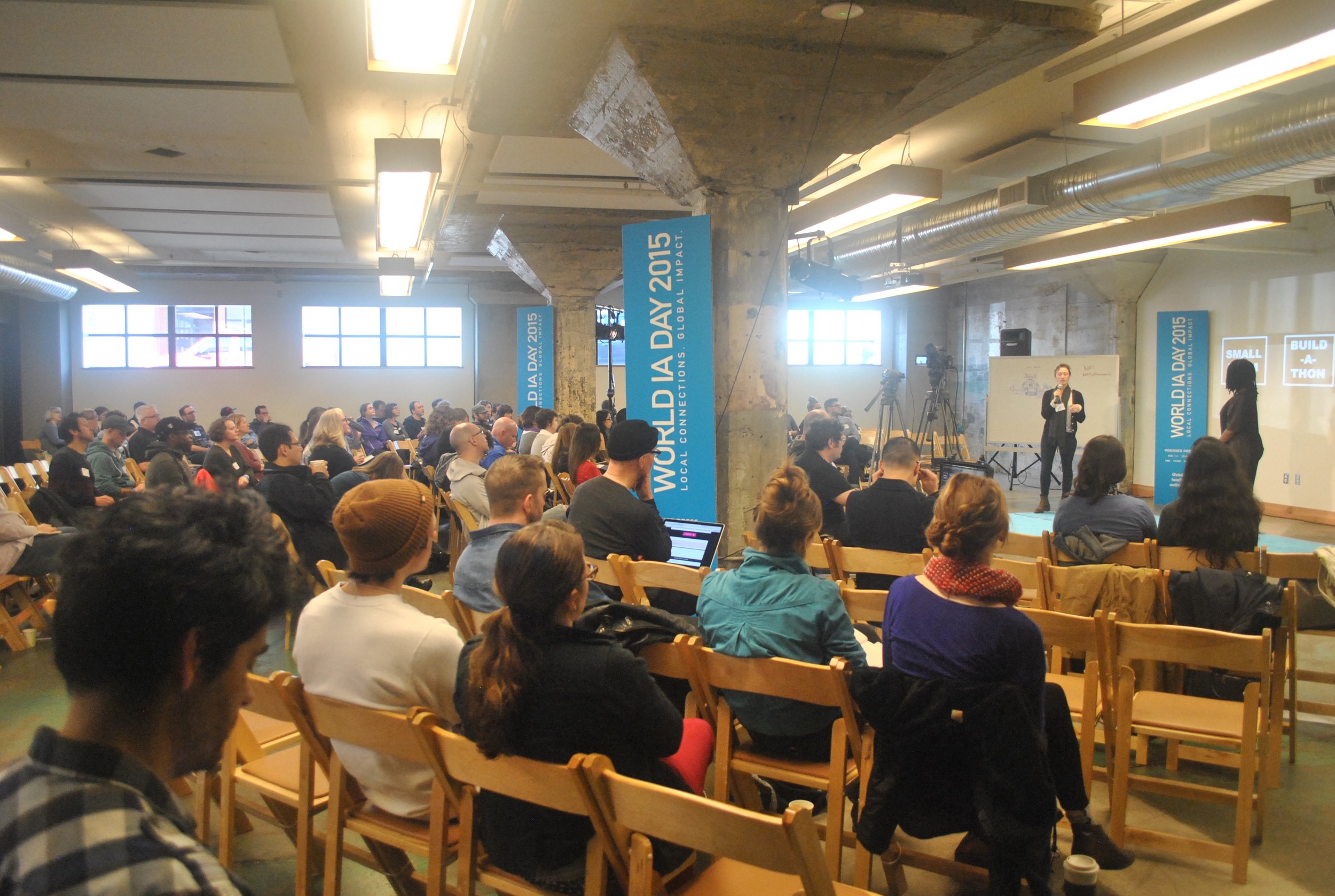The 2015 World Information Architecture Day (WIAD) was held in Portland in February. This year’s theme was centered around happiness and delved into "How to create more happiness through design." Not everyone can follow the lead of Bhutan and measure their Gross National Happiness, yet on a city and neighborhood scale we might as well try to design for happiness. We as a society, a group of neighbors and stakeholders can come together to shape and design our neighborhoods so that the environment that surrounds us contributes positively to our wellbeing. Joy Alise and Catherine Nikolovski started off the event with their presentation titled - Complete Neighborhoods: Designing for Inclusion.
As advocates and practitioners of creative community engagement, Design+Culture Lab was excited to share some industry insights with the WIAD attendees. Catherine represents Hack Oregon, a group of visionaries and data enthusiasts who deeply care about shaping and sharing information to expand public knowledge. The partnership between Design+Culture Lab and Hack Oregon grew naturally as both create design solutions around urban issues such as public disenfranchisement, root shock, food deserts and gentrification to name a few key topics from the presentation.
So how can data and information influence public well being? In this day and age, anyone can find data. How it is processed and used, on the other hand, is a different story. In the work that D+C Lab does, we often gather and process qualitative data, which can be comparable to quantifying nuances. The information that we create from engagement does not only go into a report and read by interested parties, but the process that was used to gather it contributes to the larger social aspects of change. It opens up dialogues between the diverse stakeholders, so that the changes in neighborhoods in the long run are inclusive.
Advocating for inclusive development means to be open to suggestions and inputs from community members. One sided development cannot lead to a complete and happy neighborhood. Each and every individual has a valuable and unique input into urban design. Therefore, giving voice to those who are traditionally not heard is a huge task not only for us, but everyone who cares about the holistic nature of our existence.
*We apologize for our negligence of our blog, but #startuplife is tough and amazing. It keeps us on our toes. We are looking forward to sharing more of our activities with you going forward.
**You can watch the full video here.



